↧
Conclave 2013 - Gammarelli Store Window
↧
Kukulija - Cucullus - Koukoulion - Куколь
The Moscovite koukoulion has evolved through time and the standard "design" today is with seraphim on the forehad and on the two lapels of the veil left and right as worn by the Patriarch today.
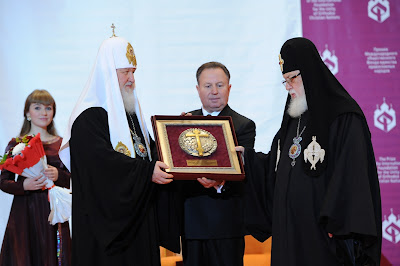
The white Muscovite koukoulion has three golden embroidered seraphim on front and flaps, and a cross on the top. His white color stands for purity of thoughts and the enlightment by the devine light.
The black Georgian koukoulion has two Seraphims on the flaps, and a cross not on the top, but on the front side of the headgear.

© pictures: Kuraev
Deesis on the front, lapels with Seraphim

© picture: Ubrus

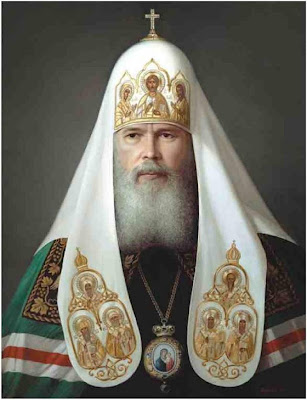
was the 15th Patriarch of Moscow and all the Rus', the primate of the Russian Orthodox Church
(23 February 1929 – 5 December 2008)

Patriarch Hermogenes (1530 - 1612)

Patriarch Joasaphus II (1667-1672)

with white koukoulion and seraphim on the lapels


© picture: Wikimedia
Above with a cross made out of brown gemstones and pearls, below with green gemstones
Seraphim made out of white perarls on the lapels
Former Metropolit Adrian (Chetvergov) of the
wearing a kukulija
Metropolit Korniliy/Cornelis (Titow) [right] of the
wearing a black kukulija with red application cord above the edges
These monk habits are called kukulija, too:

See as well the following arcticles:
↧
↧
Fashion Headcoverings - Versace Clergy Hats
↧
Pileolus of Frère Jean-Pierre Schumacher
Frère Jean-Pierre Schumacher, Trappist
The Last Monk of Tibhirine, Algeria
wearing a crocheted zucchetto
Further Readings:
↧
Coat of Arms Pope Francis
↧
↧
Head Coverings of the Bahá'í Faith
For a first introduction to the Bahá'í Faith use Wipidedia.
In the beginning Bahá'u'lláh, `Abdu'l-Bahá, Shoghí Effendí Rabbáníand the ancient apostels wore a Tarboush - طربوش with a white scarf wrapped arround.
© picture: Duffy Sheridan
© picture: Wikimedia
Bahá'u'lláh
the founder of the Bahá'í Faith
© picture: Duffy Sheridan
© picture: Wikimedia
was the eldest son of Bahá'u'lláh
© picture: Wikimedia
Shoghí Effendí Rabbání was the Guardian and appointed head of the Bahá'í Faith
from 1921 until his death in 1957
© picture: Wikimedia
Apostles of Bahá'u'lláh
1. Mirza Musa
2. Badi’
3. Nurayn-i-Nayyirayn
4. Haji Amin
5. Mirza Abu’l-Fadl
6. Varqa
7. Mirza Mahmud
8. Haji Akhund
9. Nabil-i-Akbar
10. Vakilu’d-Dawlih
11. Ibn-i-Abha
12. Nabil-i-A’zam
13. Kazim-i-Samandar
14. Mirza Mustafa
15. Mishkin-Qalam
16. Adib
17. Shaykh Muhammad Ali
18. Zaynu’l-Muqarrabin
18. Ibn-i-Asdaq
For today Bahá'í Faith has no clergy, the members do not wear anymore a special head covering.
↧
History of the Jewish Shtreimel - שטריימל
The shtreimel is the Jewish hat with the most mysterious story behind it. Today considered as a holy hat which emphasizes the divine in the head of his wearer, the legend has it, that it is the biggest sign of humiliation ever imposed on the Jews of Europe.
It started during the Fourth Council of the Lateran under Pope Inocent III. when in Canon 68 was proclaimed:
Jews and Saracens of both sexes in every Christian province must be distinguished from the Christian by a difference of dress. On Passion Sunday and the last three days of Holy Week they may not appear in public.
In consequence Jews had to wear a special headgear as well.
In the Netherlands and other European countries the outcasts were forced to wear a fur tail (fox tail) on their back.
In this context Jews wrapped fur tails around their hats.
A further story I read was that in Russia Jews wrapped fur tails around their kippot that they remain unrecognized in the public and could't be identified as Jews.
© picture from A History of Jewish Costume
© picture: Raymond Faure
Reenactment in Goslar, Germany
Judenhut
See as well the very instructive film:
↧
Franciscan Biretta
Biretta made out of Franciscan brown fabric.
This was only made as some kind of souvenir.
It is not officially worn.
See as well the article:
↧
Maison Bosc, Paris now online
The famous Maison Bosc, Paris is now online
with an own shop.
See as well my article:
in which I referred to Maison Bosc, too.
↧
↧
Biretta Model "Alipius"
To understand:
One of my esteemd readers published a comment on my article:
saying that it would be nice if the famous Father Alipius of the blog "Klosterneuburger Marginalien" would have his own "Putto Biretta".
The renowned Peter Bird helped this wish become true!
↧
The Chortkov Shtreimel (שטריימל)
(c)Wikimedia
A shtreimel with a very high and pointy crown.
For further details, refer as well to my post:
↧
The Whole Truth
The Whole Truth
... everything you always wanted to know about Jews
... everything you always wanted to know about Jews
An exhibition of the Jewish Museum Berlin from 22nd March until 1st September 2013.
I visited the exhibition on Monday, 22th April 2013. It is really worth to see it. Very well done and very instructive.
Some impressions about Jewish head coverings:
The "hat section"
The headlines
Special kippa with the name of Rabbi Nachman of Breslov
Same style with pompom like here:
I can highly recommend to you the article:
by Michal Friedlander, too.
↧
Exhibition in Poland
A nice exhibition wiht several objects out of the collection of Mr Karol Wozikowski
takes place from 24th April until 31st May 2013 in the museum of the diocese Łowicz
Some impressions you will find under:
↧
↧
The Protestant Barett - Looking for pictures
In October 2011 I published an article about
I was looking for pictures showing a protestant priest wearing a barett.
I only found the following picture:
I don't know why I couldn't find more pictures?
Do you have some pictures?
I would be happy if you would share them with me.
You can contat me via the contact form.
↧
Fashion Headcoverings - Dolce and Gabbana Clergy Hats
↧
To Start a Conversation with another Person
This extraordinary biretta lies on the desk of a catholic priest in Florida, USA.
It has only one task: to start a conversation with another person!
After seeing this biretta his vistors often ask him questions about this funny looking headgear. Then, as a biretta aficionado, he can talk about using the biretta in church.
What a pity that the wonderful article "Das Birett - Sein aktueller Gebrauch" (The Biretta and its Use Nowadays) written by Marin Raffelt is not available in English.
It would be very delightful for every biretta enthusiast, who believes that the biretta is symbolic of centuries-old tradition, much of which has been lost in the surge of liturgical reform since the 1960s.
↧
Head Coverings of Orthodox Patriarchs: Klobuk (Клобук) and Epanokalimmavko(n) [επανωκαλύμμαυκο(ν)]
Greek tradition:
The original (native) Epanokalimmavko(n) [επανωκαλύμμαυκο(ν)] was with a removable veil covering the Kalimmavchi(on) [καλυμμαύχι(ον)]. The veil is placed on the underlying Kalimmavchi(on)[καλυμμαύχι(ον)] with a conical top or removed, depending on the occasion. The veil is always worn for liturgical prayer. In non Greek traditions the veil is fixed on the hat beneath and not removable.
For Epanokalimmavko(n) - επανωκαλύμμαυκο(ν) you find it as well named/written as:
[Epanokalimavko(n), Epanokalymmavko(n), Epanokalymavko(n), Epanokalimmafko(n), Epanokalimafko(n), Epanokalymmafko(n), Epanokalymafko(n)
Epanokamelavko(n) - επανωκαμήλαυκο(ν), Epanokamilavko(n), Epanokamilafko(n), Epanokamelafki (volksspr.), Epanokamelavki (volksspr.)
Epirrhiptari(on) - επιρριπτάρι(ον)]
For Kalimmavchi(on) [καλυμμαύχι(ον)] you find it as well named/written as:
Kalymmavchi(on), Kalymmauchi(on), Kalimafhi(on), Kalymmavchi, Kalimafi
Kalimmauki(on) - καλυμμαύκι(ον), Kalymmavkhi(on), Kalymmauki(on), Kalymauki
Kamelauki(on) - καμηλαύκι(ον), Kamilauki(on), Kamelavki(on), Kamilavki(on),
Kamelafki(on), Kamilafki(on), Kamilafki, Kamilavki]
Russian tradition:
The klobuk has a conical kamilavka (Камилавка) as base with a veil fixed attached to the kamilavka.
In general you can distinguish between:
- color (white or black):
Black color is mainly worn by orthodox archbishops and bishops, if they originate out of the monasticism.
White color is mainly worn by the metropolitans of the orthodox church.
- decoration (cross or without cross) on the forefront
Only dignitaries of the Russian tradition decorate their klobuk by a cross made out of precious stones. The cross normally has only one crossbar with exception of the cross of the Metropolitan of Minsk and Slutsk.
Dignitaries coming from the Greek tradition do not decorate their Epanokalimmavko(n) with a cross. Exeptions may occur.
If you want to know it more in detail, please have a look at the
The bases:
Left: Greek Kalimmavchi(on) [καλυμμαύχι(ον)]
Richt: Russian Kamilavka (Камилавка)
Some examples:
His Holiness Irinej,
Archbishop of Pec, Metropolitan of Belgrade and Karlovci and Patriarch of the Serbian Orthodox Church
White klobuk (veil is permanent attached) with golden cross
Archbishop of Pec, Metropolitan of Belgrade and Karlovci and Patriarch of the Serbian Orthodox Church
White klobuk (veil is permanent attached) with golden cross
His Holiness Daniel,
Archbishop of Bucharest, Metropolitan of Muntenia and Dobrudgea, Locum tenens of the throne of Caesarea of Cappadocia, Patriarch of Romania
White Epanokalimmavko(n) [επανωκαλύμμαυκο(ν)] with cross
![]()
Archbishop of Bucharest, Metropolitan of Muntenia and Dobrudgea, Locum tenens of the throne of Caesarea of Cappadocia, Patriarch of Romania
White Epanokalimmavko(n) [επανωκαλύμμαυκο(ν)] with cross

His Beatitude Patriarch Maxim,
Head of the Bulgarian Orthodox Church
Head of the Bulgarian Orthodox Church
His Beatitude Metropolitan Krystof,
Primate of the Orthodox Church in the Czech Lands and Slovakia
White klobuk (veil is permanent attached) with golden cross
Primate of the Orthodox Church in the Czech Lands and Slovakia
White klobuk (veil is permanent attached) with golden cross
His Beatitude Metropolitan Daniel (Nushiro),
Head of the Japanese Orthodox Church
White klobuk (veil is permanent attached) with golden cross
Head of the Japanese Orthodox Church
White klobuk (veil is permanent attached) with golden cross
His Beatitude Sawa,
Archbishop of Warsaw and Metropolitan of All Poland,head of the autocephalous Church of Poland
White klobuk (veil is permanent attached) with golden cross
Archbishop of Warsaw and Metropolitan of All Poland,head of the autocephalous Church of Poland
White klobuk (veil is permanent attached) with golden cross

(c) picture: Masslim
Jonah (Paffhausen), Archbishop of Washington, Metropolitan of All America and Canada and primate of the Orthodox Church in America (OCA) from 2008 to 2012
White klobuk (veil is permanent attached) with golden cross
Metropolitan of Minsk and Slutsk, Patriarchal Exarch of All Belarus and leader of the Belarusian Orthodox Church
White klobuk (veil is permanent attached)
White klobuk (veil is permanent attached)
Cross with a smaller crossbeam (sign INRI) used by the Jagiellonian Dynasty in Poland. This cross now features on the coat of arms of Lithuania and in former times also the coat of arms of Belarus. It reminds of the Belarussian Saint Euphrosyne of Polatsk, who wears a cross with 2 crossbeams on her hood, too.

Archbishop Chrysostomos (Chrysostom) II,
Archbishop of Nova Justiniana and All Cyprus
Black Epanokalimmavko(n) [επανωκαλύμμαυκο(ν)] with cross
Black klobuk
White klobuk
↧
↧
Russian Klobuk (Клобук) and Kukulija (Куколь)
Very nice picture showing the clergy of the
Russian Orthodox Church
1.
In the middle:
wearing a white kukulija (Cucullus,Koukoulion,Куколь)
2.
To his right an left:
wearing a white klokuk with cross on the forehead
A white klobuk is worn by all metropolitan bishops depending from the Moscow patriarchate.
And it is worn only by the primates of the Serbian, Bulgarian, Finnish, Estonian and Romanian Orthodox Church and of the Orthodox Church of America (OCA).
3.
First row, left:
Archbishop
wearing a black klokuk with cross on the forehead
2.
Second row:
Bishops
wearing a black klokuk
↧
Summer Cap with Embroidered Cross
In December 2010 I published an articel about the Polish priest kaszkiet.
And in February 2013 about a flat winter cap.
Now the "Fabryka Czapek i Kapeluszy KASZKIET" offers summer caps in light weight cotton.
And in February 2013 about a flat winter cap.
Now the "Fabryka Czapek i Kapeluszy KASZKIET" offers summer caps in light weight cotton.
An ideal gift for your parish priest, bishop or cardinal!
With white/black embroidered cross for a priest
With white/black embroidered cross for a priest
With paonazzo (red-purple) embroidered cross for a monsignor
With green embroidered cross for a bishop
With red embroidered cross for a cardinal
↧
Camaro in Dark Blue Color
I visisted the PRADO museum in Madrid last Saturday and saw the painting
from
The third person from right is Francisco Jiménez de Cisneros.
He was painted by Rosales wearing a camauro in dark blue color.
Why? I will figure it out.
Or maybe one of my esteemed readers knows the answer?
↧





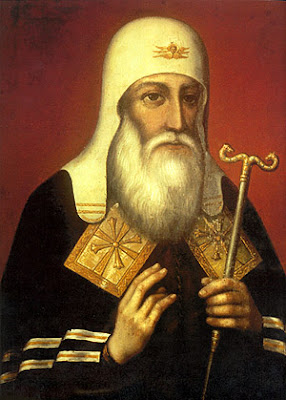








.jpg)















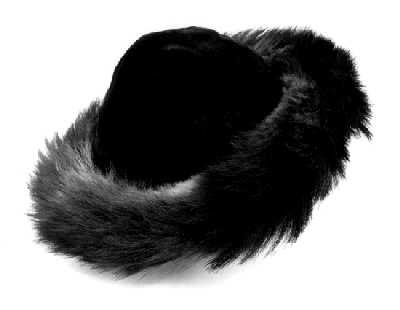























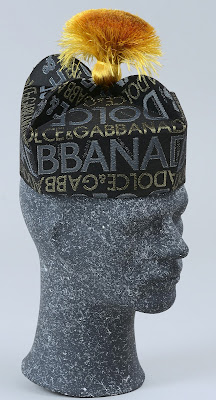




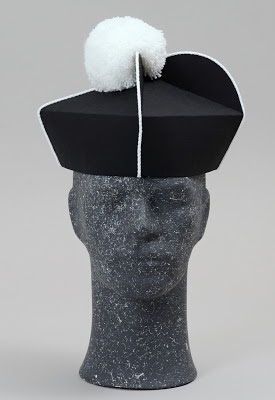





















![Robert Priest - People Like You and Me (2024) [Hi-Res]](http://www.dibpic.com/uploads/posts/2025-07/1751805912_lhttl01vuwv8a_600.jpg)


